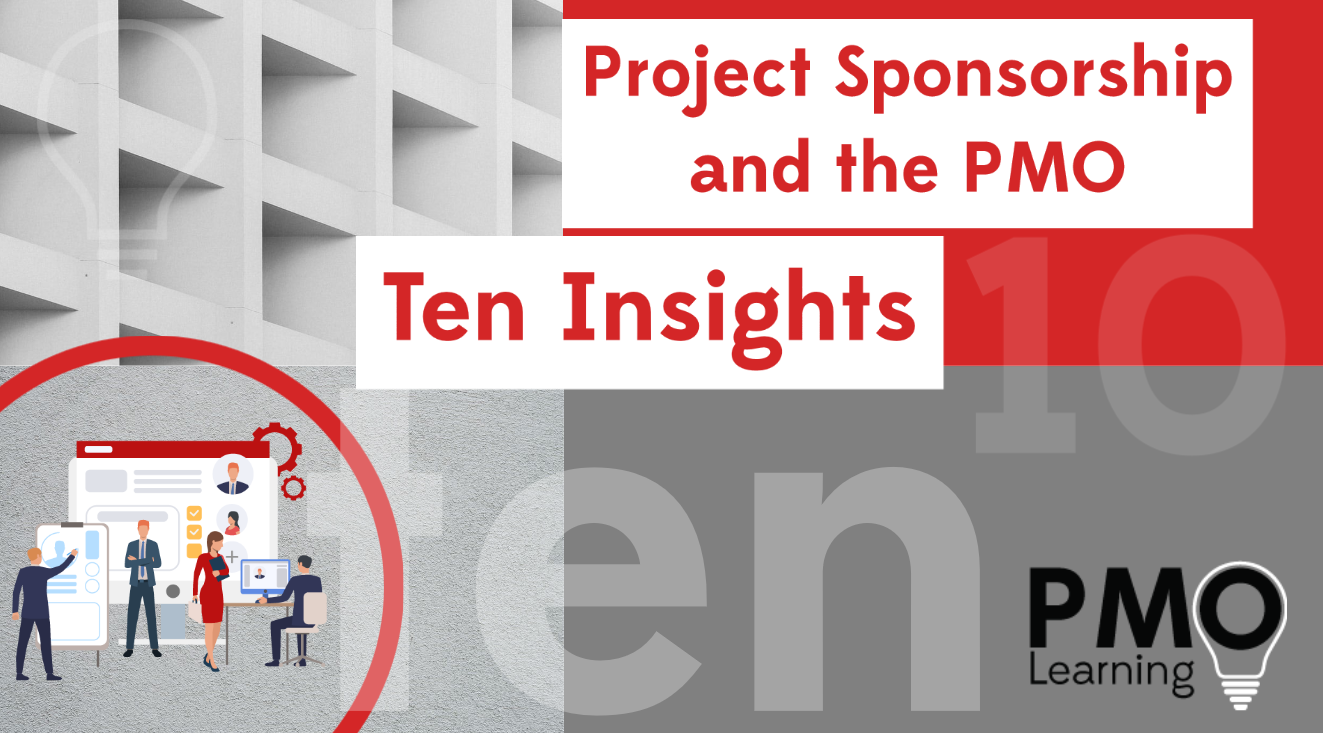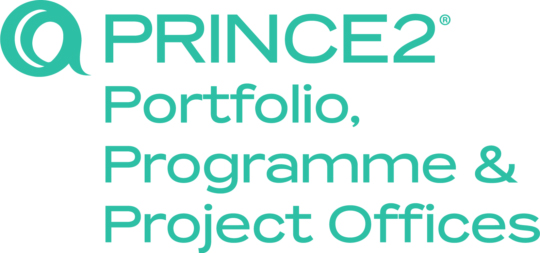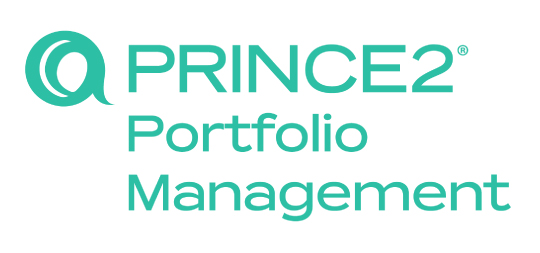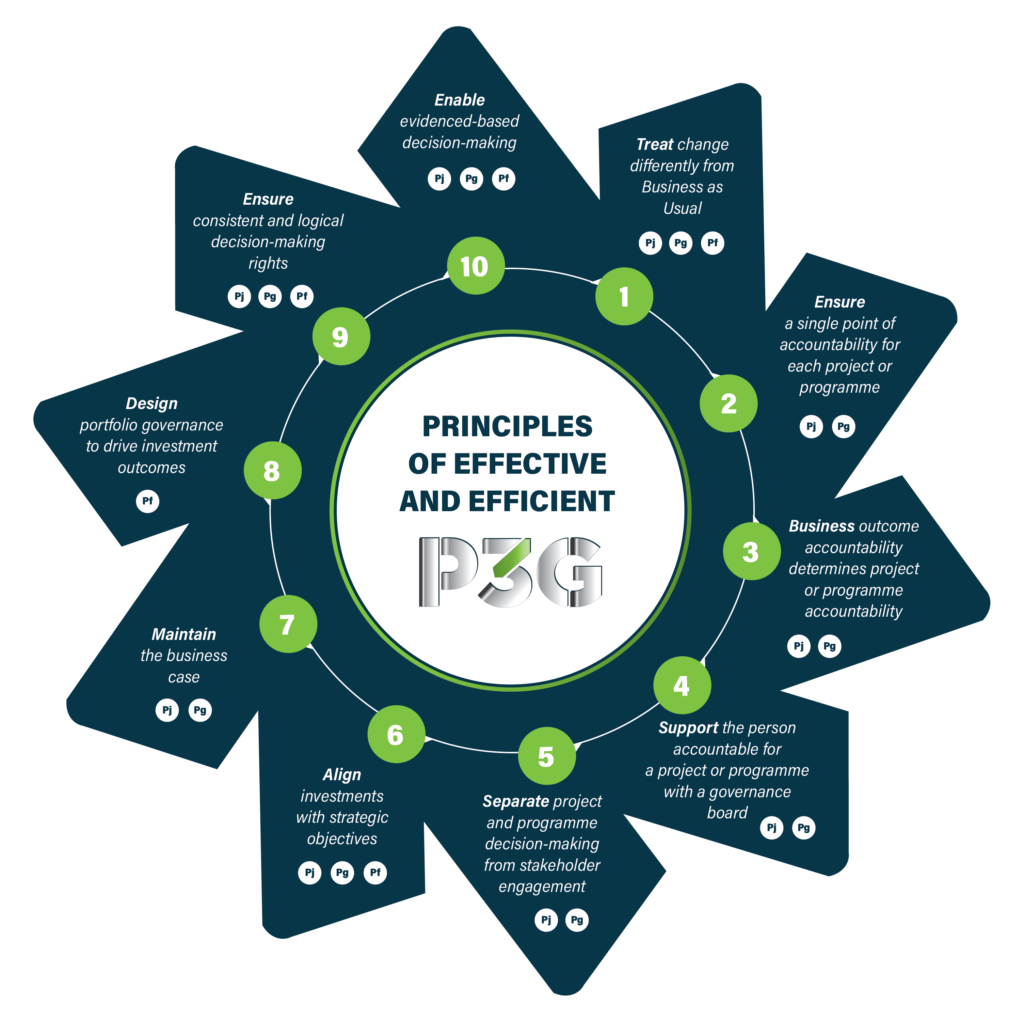 Research and experience tells us that the role of the Programme and Project Sponsor is key to successful delivery. However, in many organisations, even those who recognise the need for a Sponsor, still see it as a figurehead rather than a role with defined activities.
Research and experience tells us that the role of the Programme and Project Sponsor is key to successful delivery. However, in many organisations, even those who recognise the need for a Sponsor, still see it as a figurehead rather than a role with defined activities.
In the one-day course, Project Sponsorship and the PMO, we cover what the PMO can do to establish the role within the organisation and then support their role during programme and project delivery.
First of all, who are sponsors?
Who Are Sponsors?
Sponsors are needed on projects and programmes because there is the recognition that they deliver the benefits. The Sponsors are the people who want and need the benefits that come from doing the project or programme in the first place.
Typically the Sponsor will be a manager or executive within the business – a head of department who needs this project or programme to deliver a change in some way. Most of the time, Sponsors are not people who are coming from a project management background or indeed know the details of how projects and programmes are run. Many of the Sponsors have an operational background.
There are many well-documented cases that focus on the Sponsor role not working well for numerous reasons including;
- Projects selected not aligned with the overall company strategy
- No clear relationship between Sponsor, Project Manager and the project team
- Unclear accountabilities of the Sponsor role
- Lack of time given to Sponsor responsibilities
- Sponsor lacks experience and skills in the sponsorship role.
Many of the sponsors are respected senior managers of the organisation and won’t take well to be shown as ‘incompetent’ in what is a key part of a senior manager’s role.
PMI says it well in their Executive Engagement paper (PDF)
Too often, the term “project sponsor” conjures up the image of a disconnected executive whose main responsibility is to secure the project funds and then come in for the victory lap when it is all over. But an engaged executive sponsor — with a vested business interest in the project from kickoff to close — can mean the difference between success and failure.
The new Project Sponsorship and the PMO one-day course is focused on understanding more about the sponsor role; the organisation and structure required to promote good sponsorship; establishing the right project delivery processes which support the work of the Sponsor and how the PMO can establish greater credibility with senior management – all of which impacts the success of the projects and programmes.
Here are ten insights for you to think about when it comes to the PMO supporting project sponsorship capability within your organisation.
1. Sponsorship Involvement Corresponds with Capability Levels
What does this mean? Great sponsorship comes with great project management. The better your organisation’s approach to project management, the better the involvement from sponsors.
If the maturity of project management delivery is lacking, chances are there will be work to be done with the sponsors.
2. Sponsors Main Responsibility
There has to be recognition that the Sponsor is responsible for delivering the benefits of the project.
The project gives benefits – the whole reason for doing the project in the first place. It’s not just the outcome of the project but the actual benefits.
Benefits are often not realised for a while after a project concludes so someone has to be there to make sure the benefits do get realised.
This is not the Project Manager, this is the responsibility of the Sponsor.
3. Sponsors Learn to Ask the Right Question
And perhaps the only question that counts when a project is nearing its conclusion.
“What am I going to do when the Project Manager has finished delivering this project?”
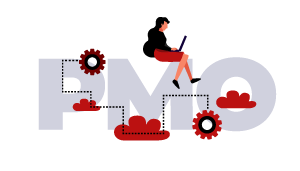 4. Two Things Needed by the PMO
4. Two Things Needed by the PMO
The PMO has to ensure that there is an established project delivery process in place. That goes back to the correlation between maturity of delivery and the role of the sponsorship mentioned above. It’s up to the PMO – it’s their first main job to do – being in a position to help sponsors do better at their jobs.
The second thing is – the PMO has to establish credibility with senior management. Without credibility, no one is going to be interested in how the PMO can help.
5. What PMOs Need to Do
There are three things:
- Know your stuff – that’s everything related to projects, programmes etc
- Know your business – that’s the organisation you’re working in
- Build relationships – across, up and down the business.
You’ll need these three things in order to help sponsors do their job.
6. Recognise the Behavioural Stuff
When working with sponsors – senior executives in an organisation – they don’t take kindly to someone pointing out that perhaps they’re not doing the best they can as a sponsor.
Who really wants to be made to feel incompetent? Especially in front of their peers?
Yet many sponsors don’t really know what the role of the sponsor is.
That’s why it’s advised when you’re thinking about putting together some sponsorship training for your sponsors that you don’t call it training.
Call it an executive briefing instead. In fact, sponsorship training should ideally be delivered as ‘leadership’ training.
 7. The Starting Point for Sponsors
7. The Starting Point for Sponsors
It helps to introduce a basic set of tasks required by each and every sponsor. There are four key areas, these are being accountable for, and signing off on:
- the business case for the project
- the scope of the project
- the handover of the project
- and the benefits of the project
These are all small tangible things that the sponsors should take accountability for today.
We know that there is a lot more to the job – a lot of intangibles like stakeholder management – and you can work towards those once the four basics are in place
8. Sponsors and Project Managers
They need to work out the relationship they want with each other by working out what each actually wants from each other.
Interestingly in some cases as the sponsor becomes more experienced, the Project Manager can get more annoyed by this empowerment.
Well they do say that project management is all about people so we can expect different behavioural outcomes!
9. A Sponsors Community
Building a community for sponsors can work – it’s a place to share successes, discuss challenges and improve on the processes.
This is about sponsors getting together with other sponsors and talking about the sponsorship aspect of their roles with others. The best place to do this is at an existing board meeting or similar where all sponsors are together (portfolio meeting?)
10. Measurement Has a Place
At the moment many sponsors don’t have feedback, reward or recognition for doing the sponsor role.
HR changes will be needed – embedding the role within job descriptions is a start. Encouragement of specific performance targets too – which of course may only be achievable by certain types of PMO which have influence on HR matters.
To sum it up then, the PMO in its main objective of supporting and improving the programme/project delivery capability of the organisation – should include sponsor support in that remit.
If the PMO should start anywhere it’s making sure the four basic accountabilities (the starting point for sponsors) are in place; executive briefings have taken place to give a broader background on the role; and enabling a community of sponsors to exist by providing a framework that aids the conversations.
Enjoying Our Blog?
Sign up and receive all our articles (we’ll send you an update once a week!) plus special offers and events:
